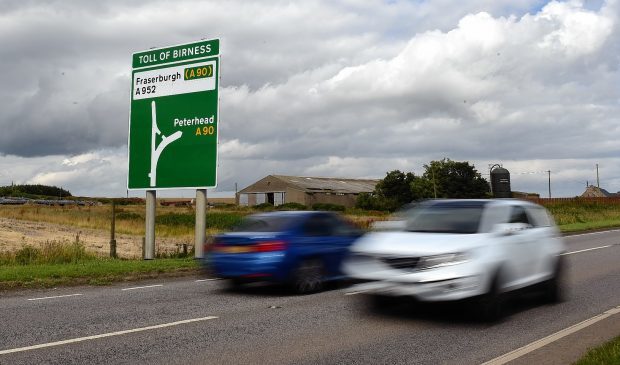New proposals for multimillion pound road and rail improvements across the north-east of Scotland were revealed yesterday.
The region’s transport board Nestrans, which includes members of both Aberdeen and Aberdeenshire councils, has published the finding of two new reports into possible infrastructure changes.
One of the new studies shows the costs, benefits and amount of expected passengers for a reopened rail service between Aberedeen, Dyce and Ellon based loosely on the old Formartine and Buchan line.
It outlines three possible options, costing between £270million and £381million, and it is expected a new rail service in the area would attract up to 700,000 journeys a year.
The second study has shown the potential advantages of upgrading the A90 Aberdeen to Fraserburgh road as well as the A952 Toll of Birness to Fraserburgh route.
The report argues that with an investment of £39million, the two roads could be upgraded through a number of measures, including a roundabout at the notorious Toll of Birness and Cortes junctions, as well as other safety improvements and more overtaking lanes – as well as partial dualling of the routes.
Aberdeenshire Councillor Peter Argyle, the chairman of Nestrans, said: “What we can see in the road report is that if we can obtain what we see as a fairly modest investment from Transport Scotland, we could deliver new infrastructure that would deliver benefits to travel in the north-east.
“With a phased delivery on investments to the A90 and surrounding roads, we would see a series of road measures to improve safety for road users, reduced journey times, improved journey time reliability, but with little impact on emissions outputs.
“The findings from the rail report are not as clear cut – the study shows that whilst reinstating a rail line between Aberdeen, Dyce and Ellon would be materially feasible, popular amongst travellers, environmentally beneficial through reducing emissions and would bring benefits to the area, it also finds that, at this moment in time, it is significantly more expensive and would require ongoing subsidy.
“Both reports present us with some very detailed analysis into the opportunities and give us a much clearer and informed position on the feasibility and merits of both options.”
Nestrans will now consult with both city and shire councils before looking at the study again in February, where a decision will be made to proceed with preferred options.
